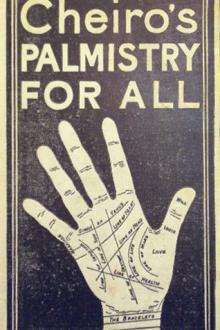The Diary - Samuel Pepys (red white and royal blue hardcover txt) 📗

- Author: Samuel Pepys
Book online «The Diary - Samuel Pepys (red white and royal blue hardcover txt) 📗». Author Samuel Pepys
John Scott (calling himself Colonel Scott) ingratiated himself into acquaintance with Major Gotherson, and sold to the latter large tracts of land in Long Island, to which he had no right whatever. Dorothea Gotherson, after her husband’s death, took steps to ascertain the exact state of her property, and obtained the assistance of Colonel Francis Lovelace, Governor of New York. Scott’s fraud was discovered, and a petition for redress was presented to the King. The result of this was that the Duke of York commanded Pepys “to collect evidence against Scott, and he accordingly brought together a great number of depositions and information as to his dishonest proceedings in New England, Long Island, Barbados, France, Holland, and England,”32 and these papers are preserved among the Rawlinson Manuscripts in the Bodleian. Scott had his revenge, and accused Pepys of betraying the Navy by sending secret particulars to the French Government, and of a design to dethrone the king and extirpate the Protestant religion. Pepys and Sir Anthony Deane were committed to the Tower under the Speaker’s warrant on May 22nd, 1679, and Pepys’s place at the Admiralty was filled by the appointment of Thomas Hayter. When the two prisoners were brought to the bar of the King’s Bench on the 2nd of June, the Attorney-General refused bail, but subsequently they were allowed to find security for £30,000.33
Pepys was put to great expense in collecting evidence against Scott and obtaining witnesses to clear himself of the charges brought against him. He employed his brother-in-law, Balthasar St. Michel, to collect evidence in France, as he himself explains in a letter to the Commissioners of the Navy:—
“His Majesty of his gracious regard to me, and the justification of my innocence, was then pleased at my humble request to dispence with my said brother goeing (with ye shippe about that time designed for Tangier) and to give leave to his goeing into France (the scene of ye villannys then in practice against me), he being the only person whom (from his relation to me, together with his knowledge in the place and language, his knowne dilligence and particular affection towards mee) I could at that tyme and in soe greate a cause pitch on, for committing the care of this affaire of detecting the practice of my enemies there.”34
In the end Scott refused to acknowledge to the truth of his original deposition, and the prisoners were relieved from their bail on February 12th, 1679–80. John James, a butler previously in Pepys’s service,35 confessed on his deathbed in 1680 that he had trumped up the whole story relating to his former master’s change of religion at the instigation of Mr. William Harbord, M.P. for Thetford.
Pepys wrote on July 1st, 1680, to Mrs. Skinner:
“I would not omit giving you the knowledge of my having at last obtained what with as much reason I might have expected a year ago, my full discharge from the bondage I have, from one villain’s practice, so long lain under.”36
William Harbord, of Cadbury, co. Somerset, second son of Sir Charles Harbord, whom he succeeded in 1682 as Surveyor. General of the Land Revenues of the Crown, was Pepys’s most persistent enemy. Several papers referring to Harbord’s conduct were found at Scott’s lodging after his flight, and are now preserved among the Rawlinson MSS. in the Bodleian. One of these was the following memorandum, which shows pretty plainly Pepys’s opinion of Harbord:—
“That about the time of Mr. Pepys’s surrender of his employment of Secretary of the Admiralty, Capt. Russell and myself being in discourse about Mr. Pepys, Mr. Russell delivered himself in these or other words to this purport: That he thought it might be of advantage to both, if a good understanding were had between his brother Harbord and Mr. Pepys, asking me to propose it to Mr. Pepys, and he would to his brother, which I agreed to, and went immediately from him to Mr. Pepys, and telling him of this discourse, he gave me readily this answer in these very words: That he knew of no service Mr. Harbord could doe him, or if he could, he should be the last man in England he would receive any from.”37
Besides Scott’s dishonesty in his dealings with Major Gotherson, it came out that he had cheated the States of Holland out of £7,000, in consequence of which he was hanged in effigy at the Hague in 1672. In 1682 he fled from England to escape from the law, as he had been guilty of wilful murder by killing George Butler, a hackney coachman, and he reached Norway in safety, where he remained till 1696. In that year some of his influential friends obtained a pardon for him from William III, and he returned to England.38
In October, 1680, Pepys attended on Charles II at Newmarket, and there he took down from the King’s own mouth the narrative of his Majesty’s escape from Worcester, which was first published in 1766 by Sir David Dalrymple (Lord Hailes) from the MS., which now remains in the Pepysian library both in shorthand and in longhand.39 It is creditable to Charles II and the Duke of York that both brothers highly appreciated the abilities of Pepys, and availed themselves of his knowledge of naval affairs.
In the following year there was some chance that Pepys might retire





Comments (0)